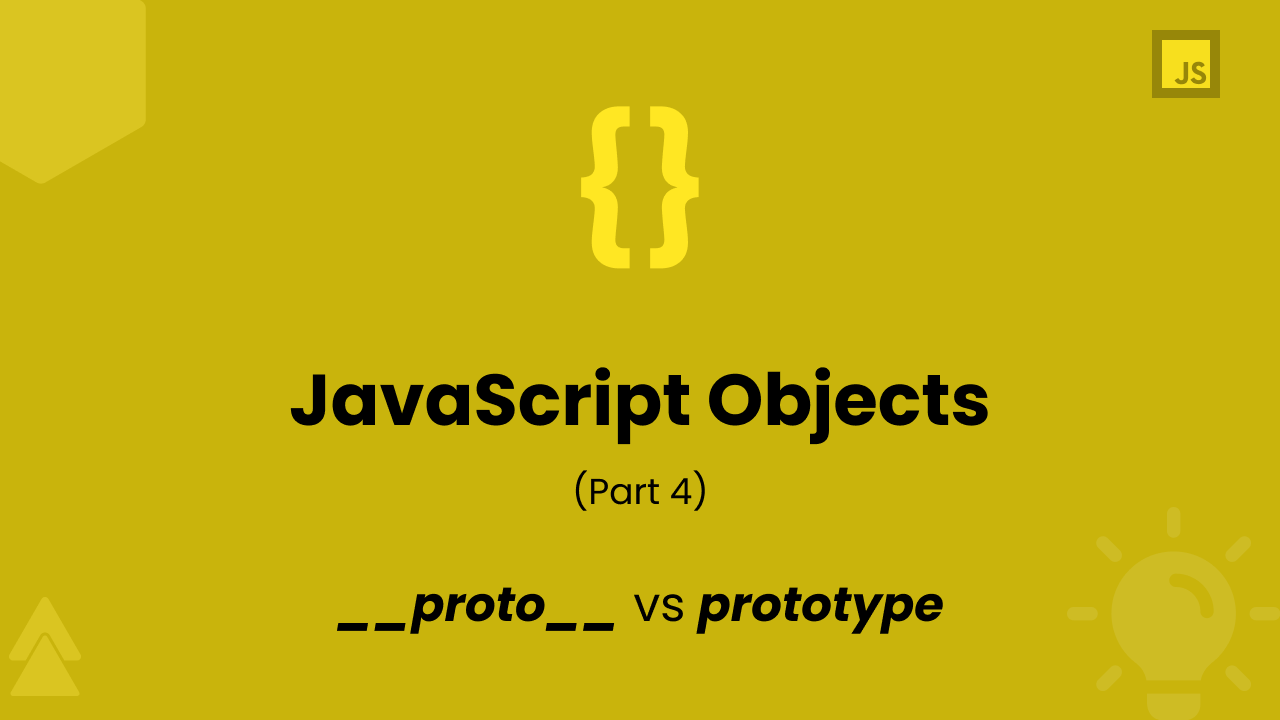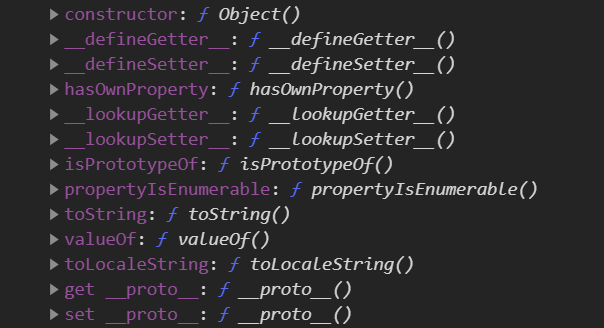Understanding JavaScript Objects (Part 4)
3 min read
We saw how the new keyword works under-the-hood and implemented it from scratch. We'll now see what is __proto__ property present on objects and how it is different from prototype. The concepts are pretty simple so this won't take much time to read and understand.
What is proto?
The __proto__ property is present on objects. Let's start by creating a object and exploring the __proto__ property.
const weapon = {
damage: 45
};
const sword = {
name: 'Time Dagger'
};
Object.setPrototypeOf(sword, weapon);
console.log(sword.name); // Time Dagger
console.log(sword.damage); // 45
This is all known code to us as we saw prototyping last time. If the sword doesn't find damage property, it will look at the weapon object. But, how does it know where to look to. Yes we've used the setPrototypeOf function to indicate it but there's a property that helps it to lookup to it. That property is __proto__.
const weapon = {
damage: 45
};
const sword = {
name: 'Time Dagger'
};
Object.setPrototypeOf(sword, weapon);
console.log(sword.name); // Time Dagger
console.log(sword.damage); // 45
console.log(sword.__proto__); // { damage: 45 }
The __proto__ property is a reference to the prototype that has been set for the object. Point to note is that it is a reference, meaning if we change the original object, the change will also be reflected here.
const weapon = {
damage: 45
};
const sword = {
name: 'Time Dagger'
};
Object.setPrototypeOf(sword, weapon);
console.log(sword.name); // Time Dagger
console.log(sword.damage); // 45
weapon.level = 3;
console.log(sword.__proto__); // { damage: 45, level: 3 }
What is prototype?
There's also thing called prototype. What does this do? The prototype property only exists on functions and is set as a property if new keyword is used. Let's see an example.
function Weapon() {}
Weapon.prototype.damage = 45;
const sword = new Weapon();
console.log(Weapon.prototype); // Weapon { damage: 45 }
console.log(sword.damage); // 45
In the last post, we saw what the new keyword does. Creates an empty object, set the prototype of the object to the constructor's prototype, execute the constructor and return the newly created object. In the example, we added damage property to the prototype of Weapon function. As prototype is an object, the sword object can now access the damage property. As said earlier, prototype is only available on functions just in case if you want to use them as constructors with new keyword.
This means that sword won't have the prototype property as it is a object but it will have a __proto__ property.
console.log(sword.prototype); // undefined
console.log(sword.__proto__); // Weapon { damage: 45 }
There's one thing you'll see in the __proto__ property of an object. A list of functions as shown below.
This is the global object prototype where all objects delegate to.
const emptyObj = {};
console.log(emptyObj.__proto__ === Object.prototype); // true
If you add any property to the prototype of the global Object, it will be available to the emptyObj as well and for all other objects.
Summary
- The
__proto__property on objects points out the prototype that has been set for that object. - The
prototypeproperty is only available for functions. - The
prototypeproperty is set as a property ifnewkeyword is used to create an object.
Note: This series is heavily inspired by Fun Fun Function's series on Object creation. The series may give you more insights as it has live coding examples.

